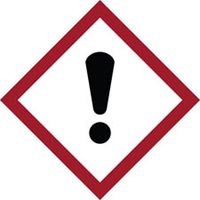| The Home page of ILPI's Safety Data Sheet (SDS) Resource, the leader in SDS information since 1995! | |
| The history and philosophy behind this resource. | |
| A curated collection of books and reference materials concerning Safety Data Sheets and closely related topics. | |
| Paste your plain text SDS into the SDS-Demystifier, and it will be converted into a hypertext-enriched document with links to detailed explanations of each key term. | |
| An extensive list of frequently asked questions about Safety Data Sheets including regulations, content, compliance, and more. | |
| A humorous take on Safety Data Sheet jargon. Fill in the blanks on our entry form to generate a personalized Unsafety Data Sheet to share with your coworkers. | |
| Since 1995, we've maintained this massive curated list of the best places to find Safety Data Sheets on the Internet. | |
| You are here! Way more than a glossary, this hypertext-enhanced resource covers hundreds of SDS-related terms and expert knowledge. Each entry includes both the SDS relevance and links to additional authoritative resources. | |
| Archived results of Safety Data Sheet related polls taken by some of our millions of site visitors | |
| The OSHA regulations behind SDS regulations, including the inspection guidelines and over 400 official interpretations letters under the Hazard Communication Standard | |
| Commercial suppliers of SDS authoring and management software as well as cloud compliance services. | |
| Commercial companies that will create SDS's for your specific needs as well as SDS translation companies. |

Safety signs, banners, and scoreboards? Get yours at Safety Emporium!
Definition
A CAS (Chemical Abstracts Service) Registry Number is a unique identifier that tells you, for example, that acetone and dimethyl ketone are actually the same substance. From a safety and inventory perspective, this is a terrific idea. As of 2022, there were 194,000,000 unique chemical substances indexed by CAS as well as 70,000,000 protein and nucleic acid sequences. In April 2021, CAS announced it had registered its 250 millionth unique chemical substance. See https://www.cas.org/about/faqs for more info.
The Chemical Abstracts Service, https://www.cas.org/, is a division of the American Chemical Society, https://www.acs.org/.
Further Information
There has been an exponential growth in the number of substances indexed by CAS, with the number doubling between 2009 and 2015 as shown in this graph:

Key point: CAS numbers identify the chemical, but not its concentration or specific mixture. For example, hydrogen chloride (HCl) has the CAS number 7647-01-0. That CAS number will appear on containers of anhydrous hydrogen chloride, a 20% solution of HCl in water, and a 2.0 molar solution of HCl in diethyl ether.
The numbers you see on trucks on the highway are not CAS Numbers, but U.S. Department of Transportation (DOT) mandated UN/NA codes which are not necessarily specific to each chemical. Their aim is to assist emergency responders. To find out what's in that tanker truck, check out the interactive version of the Emergency Response Guidebook at https://wwwapps.tc.gc.ca/saf-sec-sur/3/erg-gmu-web. Once you know what chemical it is, you can look up the SDS. You can order a printed copy of the guidebook by following the appropriate link on https://www.phmsa.dot.gov/training/hazmat/erg/erg2020-data-files. Great fun for the kids on those long trips!
SDS Relevance

Get your GHS-compliant labels and signs from Safety Emporium.
Prior to the implementation of the GHS (Globally Harmonized System of Classification and Labeling of Chemicals) in the US, the CAS number was not required information on Safety Data Sheets. Effective June 1, 2015 OSHA required that manufacturers and importers ship SDS's in the 16-part standardized GHS format that includes CAS numbers as a required element in Section 3 (Composition/information on ingredients) of the SDS. Distributors had until Dec 1, 2015 to use up their existing inventory with the old MSDS and labels.
What that means for your workplace is that you should regularly check your SDS collection to see if you have the latest version of each sheet. If yours is not up to date it's time to look for or request a new one. But see Can I throw away old or outdated SDS's? before deciding what to do with the old one.
Note: A 2020 study in Environ. Sci. Technol. found that approximately 120,000 of the 350,000+ chemicals currently used in commercial products were too poorly described to link to a CAS number or their chemical identities were withheld as a trade secret. Therefore, the availability of this information on some SDS's may sometimes be limited.
Filing chemicals by CAS number is one way to avoid the problem of finding an SDS by name ("did I file that under dichloromethane or methylene chloride??"). Even if you have a computerized system you should include a field for CAS number because chemical names are often misspelled by non-chemists and spelling checkers do not handle technical terms very well. For more on chemical naming, see the IUPAC entry.
Remember: CAS numbers uniquely identify a chemical, but not necessarily the manufacturer or concentration. Other identifying systems are discussed in their own SDS FAQ entry.

Your chemical reactions can be run safely and effectively with US-made clamps and other laboratory accessories from Safety Emporium.
Further Reading
- CAS Content at the CAS web site.
- Visit our SDS Software or SDS Suppliers pages for systems that include the CAS Number as a searchable category.
- The National Institute of Standards (NIST) Chemistry WebBook is searchable by CAS number, but has only thermodynamic and spectroscopic data rather than safety data.
- WebElements has a page that explains how to use checksums to determine if a CAS number is valid.
- The OSHA Occupational Chemical Database is searchable by chemical name or CAS Number.
See also: DOT, EINECS number, NSN and NIIN's, UN/NA numbers.